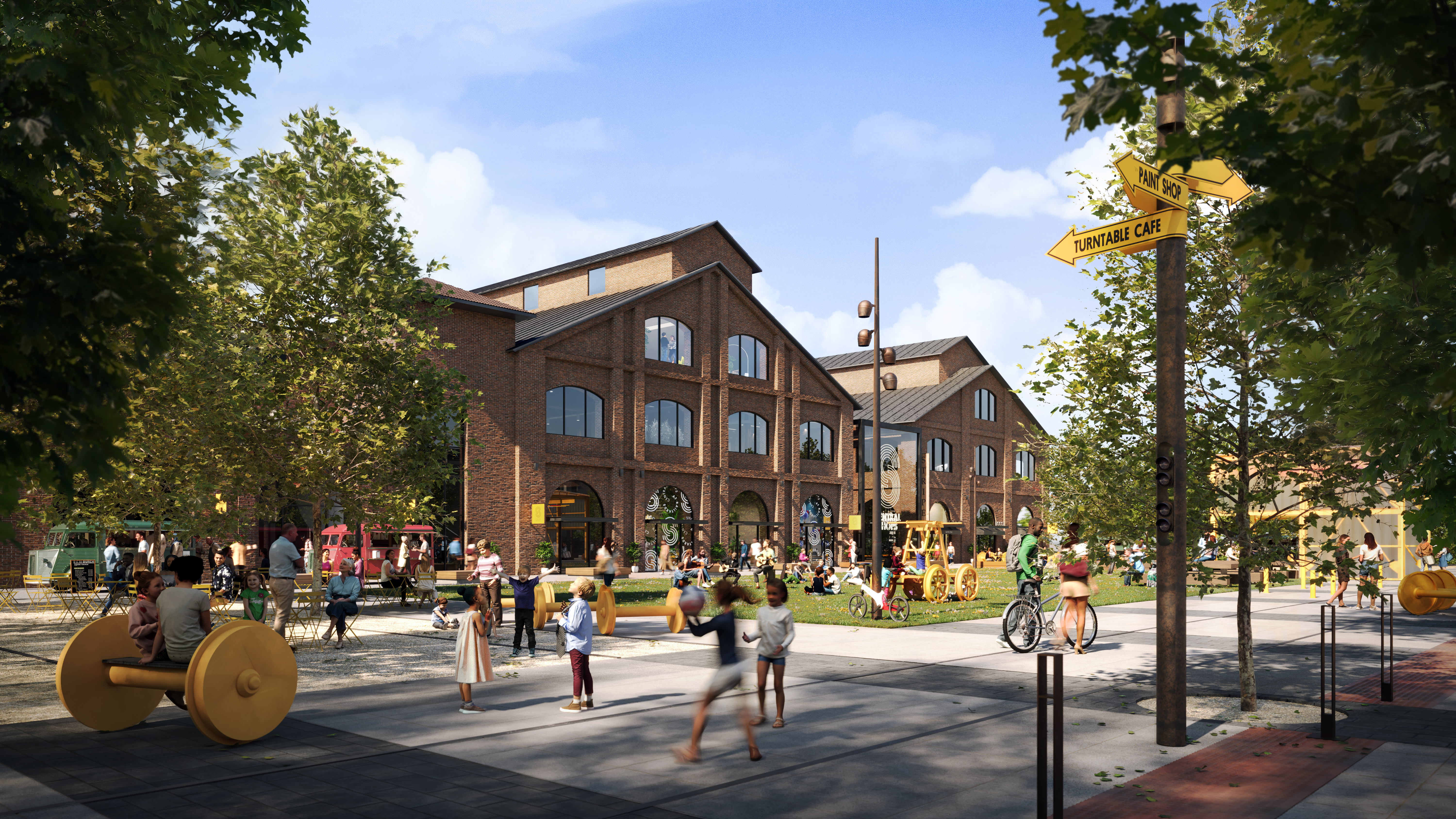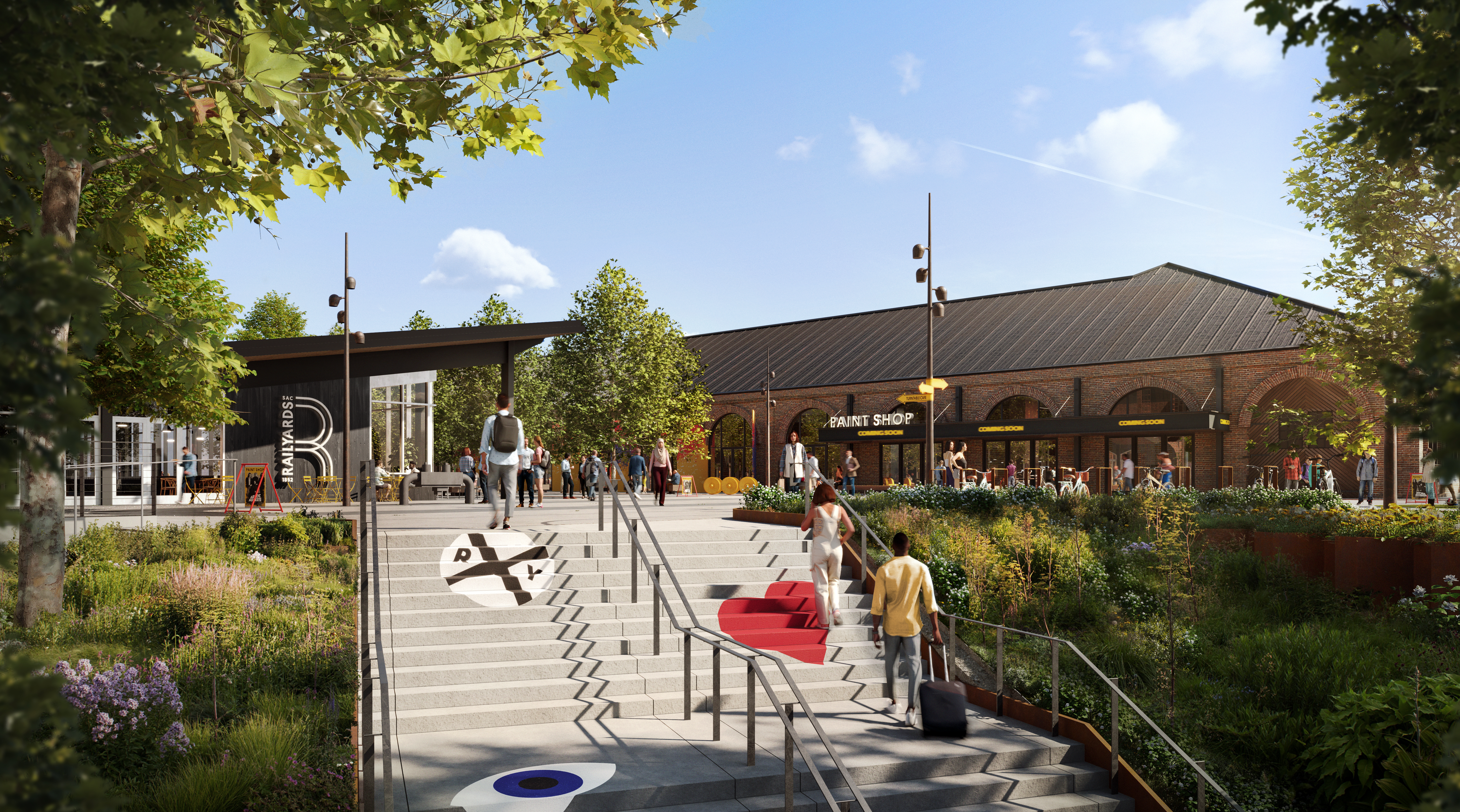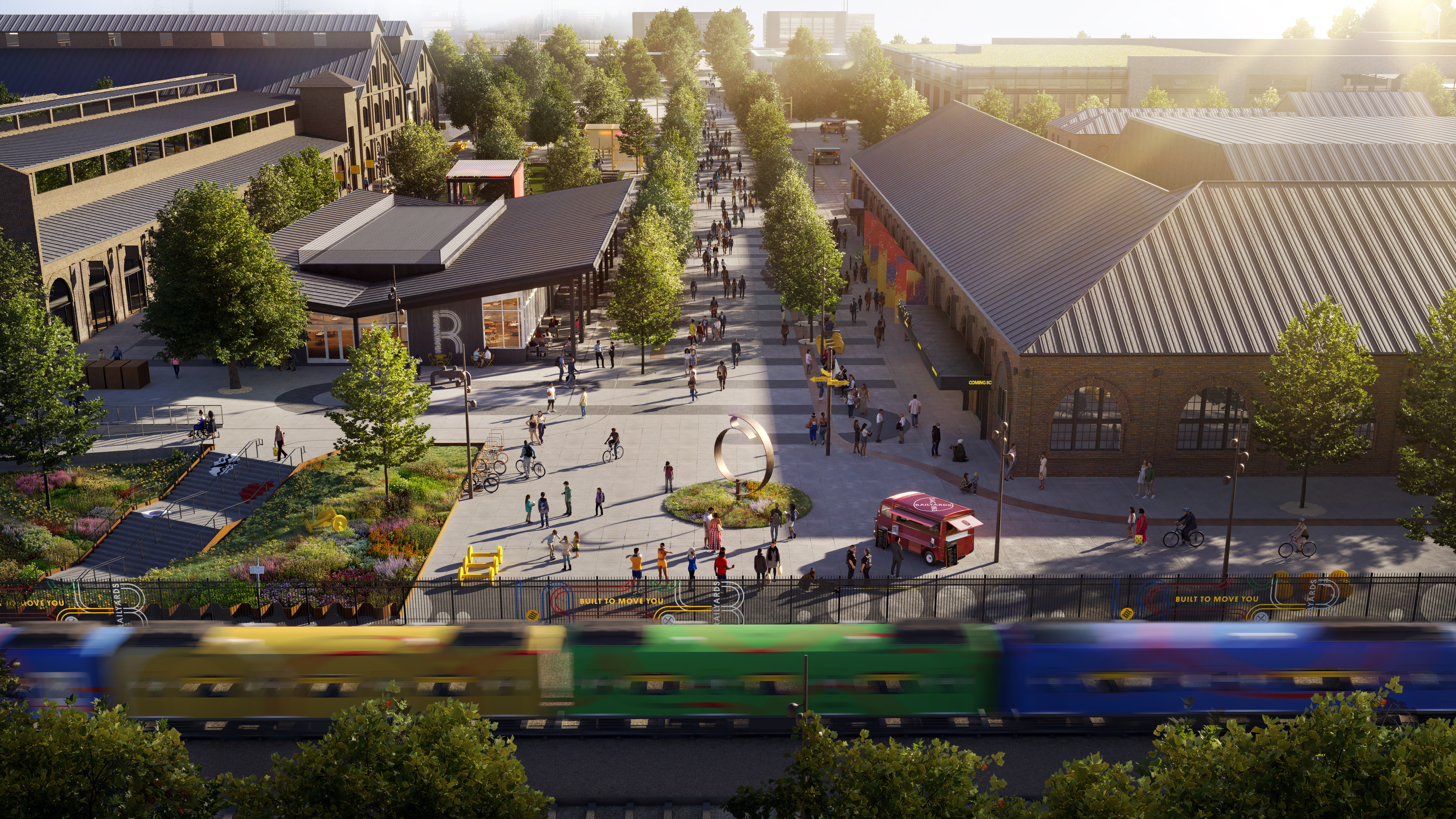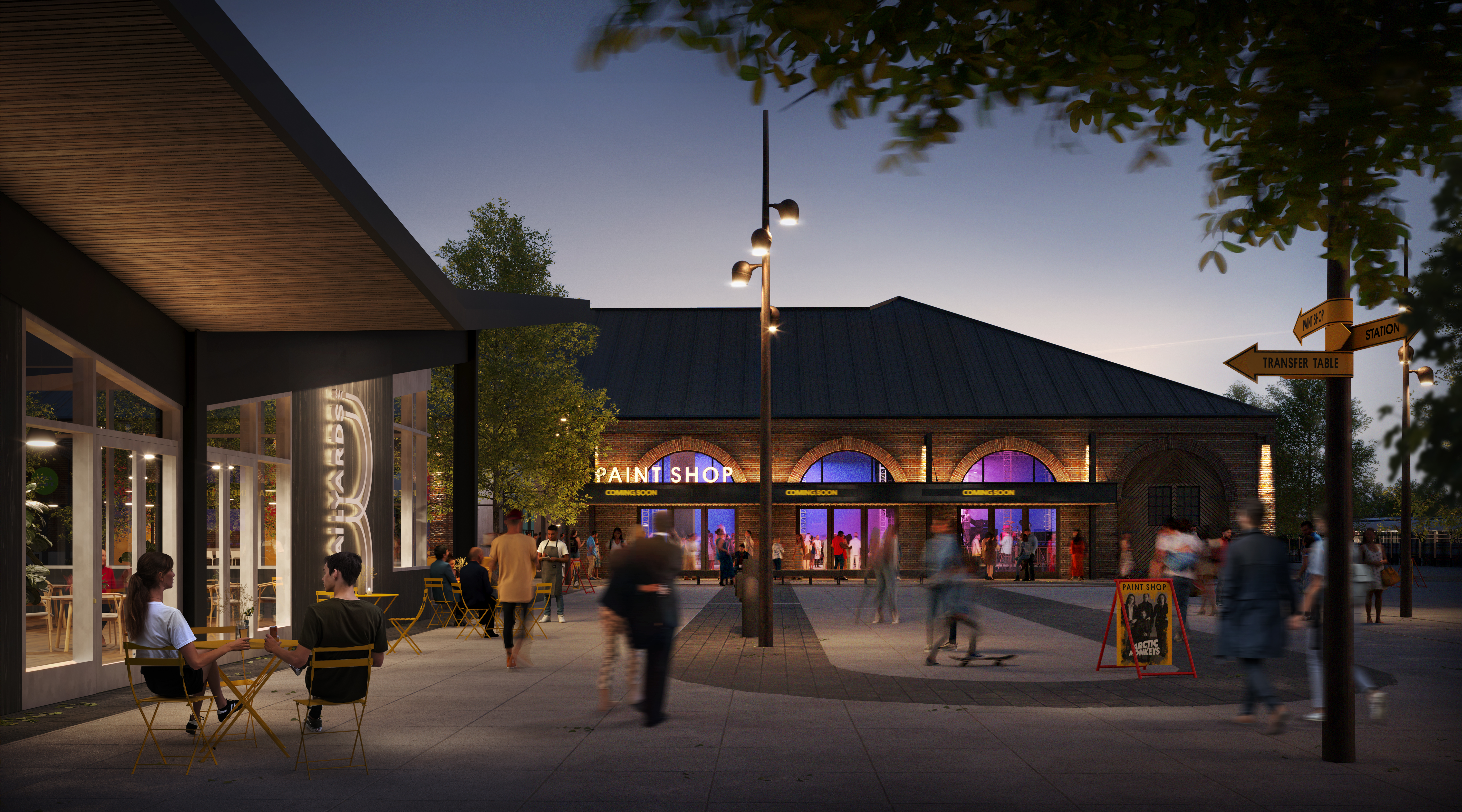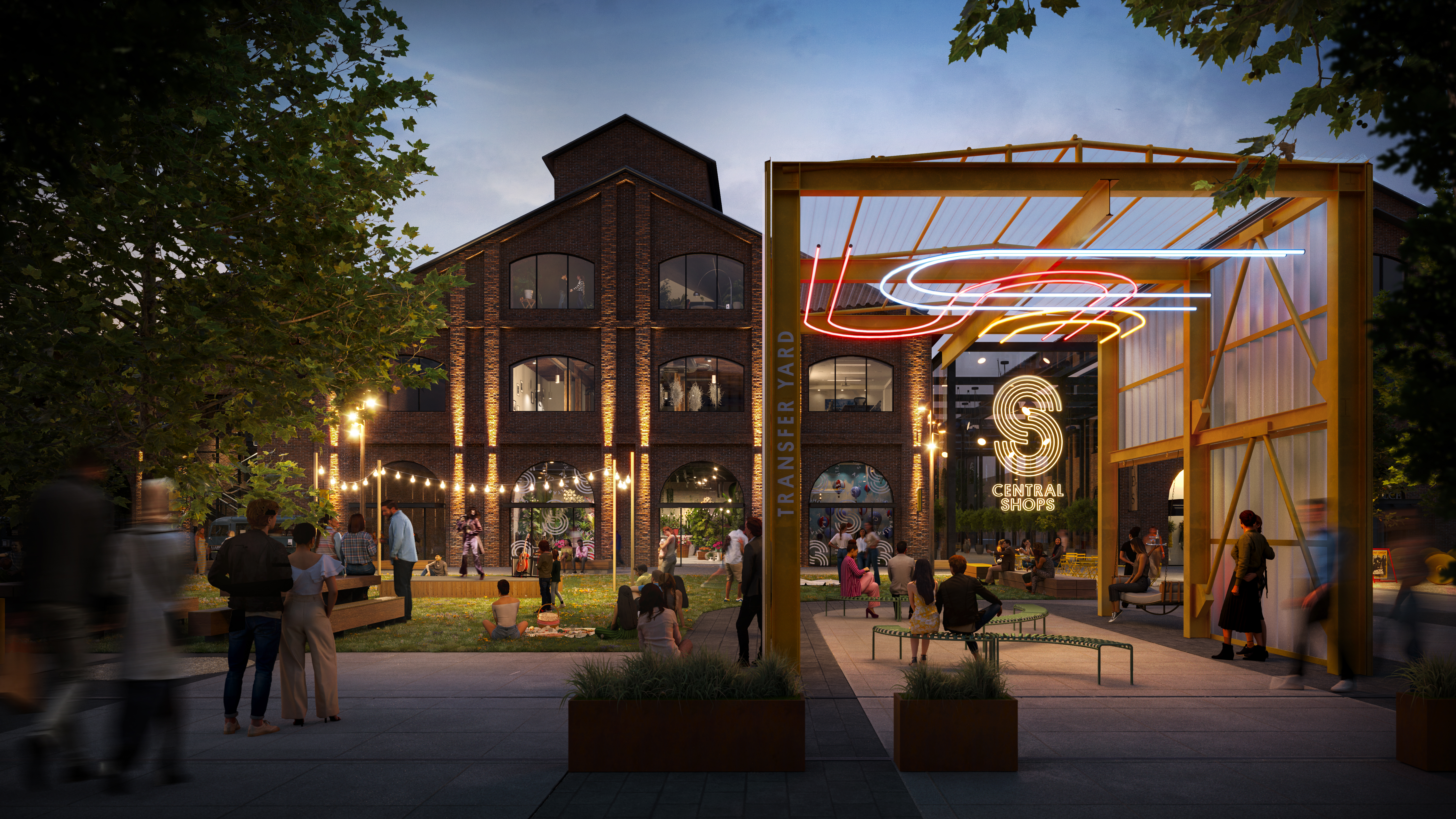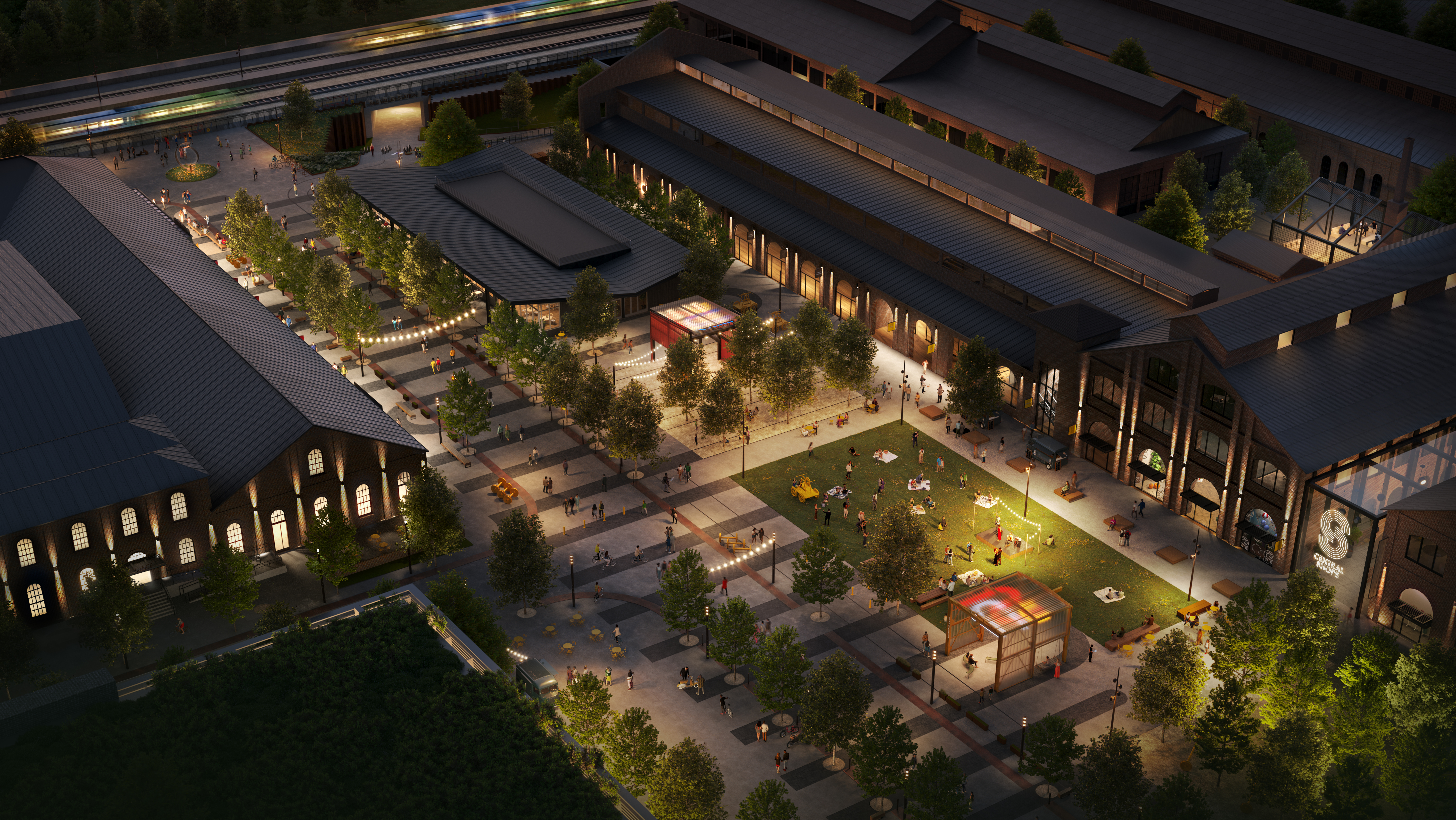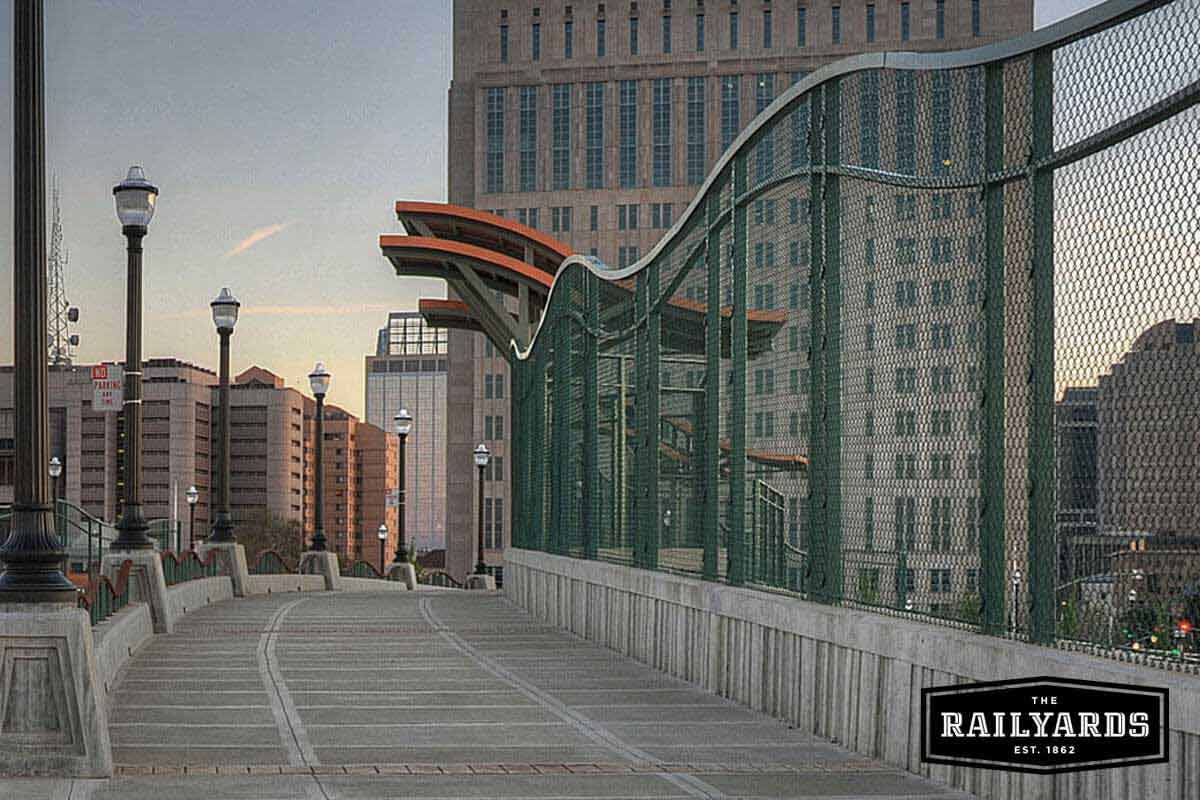
June 9, 2017 / Author: the Railyards
The Railyards is planning for an active city experience as it develops 244-acres of historically significant land into a vibrant and thriving mixed-use community.
The Railyards is planning for an active city experience as it develops 244-acres of historically significant land into a vibrant and thriving mixed-use community for all of Sacramento to enjoy. The Railyards vision is to get people out and moving; whether that’s enjoying 30+ acres of open green park space or cycling through bike-friendly streets.
And we’re not alone in our vision of an active city experience. We asked for your vision of residential living in The Railyards and you responded with enthusiasm for more trails for running, walking, and biking, secure bike parking, protected bicycle lanes on all streets, outdoor fitness park equipment, dog parks, and playgrounds for kids.
In other words, Sacramento residents want to keep moving.
Active Cities Are Attractive and Successful Communities
According to the Designed to Move Active Cities Report, higher levels of physical activity are associated with positive outcomes for most of the things that matter to city leaders and residents:
- When people move more, crime, pollution, and traffic go down.
- Productivity, school performance, property values, health, and well-being improve drastically.
Active communities and cities are better off by almost every possible measure.
Physical inactivity costs cities millions in lost productivity, higher rates of absenteeism, and higher health care costs. Physical inactivity also costs cities millions of lives; inactivity is linked to chronic diseases such as diabetes, heart disease, cancer, and stroke.
What Are The Benefits of Developing An Active City Experience for The Railyards?
By designing The Railyards into an active community, Sacramento can experience benefits in the following ways, as reported by designtomove.org:
Economic Benefits
Communities that are designed to be active can have a significant impact on the bottom line, from higher property values to greater tax revenue and increased investments.
- Active cities are more prosperous
- Active city design increases tourism, business revenue, economic investment, and property values
- More walkable cities have been shown to boost employment and visitors up to 300%
Designing a community that is walkable and cycle-friendly is good for business. Multiple studies have shown that making places better for walking and cycling can boost footfall and increase employment and number of visitors.
- Cities with a higher Walk Score ranking are associated with a 42% increase in net operating income.
- A conservative estimate of the annual economic impact of cycling in one metro area was $60 million.
- The annual economic impact of cyclists is almost 9 times the one-time expenditure to construct bicycle facilities.
The average benefit-to-cost ratio of the economic benefits of walking and bicycling improvements for a city is 13:1.
Investing in trails also drives economic development. In one U.S. city, a $70 million investment to revitalize a river greenway stimulated $2.5 billion in residential, commercial, retail, sports and entertainment projects along the corridor.
Homes in more walkable neighborhoods have been shown to be worth $4,000 to $34,000 more than those in less walkable neighborhoods. One study showed that properties in cities with higher Walk Scores were worth 29% - 49% more than properties in cities with a lower walk score.
Cycle-friendly cities have lower health care costs. A modeling study of Portland, Oregon, a Platinum-level Bicycle Friendly Community, estimated that investments in bike facilities of $138 million to $605 million will result in health care cost savings of $388 million to $594 million by 2040.
Safety Benefits
By designing an active city experience into The Railyards, residents and visitors will benefit from safer streets.
- Crime drops 74% when a street goes car-free on weekends.
- Marked bike lanes reduce vehicle-bike collisions up to 50%.
- Community gardens increase community cohesion and reduce graffiti and violence.
Streets that are pedestrian and cyclist-friendly save lives. Marked bike lanes on roads have been shown to reduce motor vehicle-bicycle collisions by as much as 50%. High bicycling cities generally show a much lower risk of fatal crashes for all road users. Pedestrian and bike-friendly streets are safer for everyone who travels on them.
Environmental Benefits
Active cities are more sustainable cities. Mixed-use high-density development cuts drive times and reduces pollution and fuel consumption. Walkability and bikeability drastically reduces driving and related pollutants. In one study, a 5% increase in walkability was associated with a 6.5% decrease in vehicle miles traveled.
The Railyards will be home to an intermodal transportation hub that includes long distance rail, inner-city local bus, charter operations, auto park and ride, bicycles, and high speed rail. Public transportation is greener transportation. Public transportation has been found to produce 95% less carbon monoxide, 90% less volatile organic compounds, and half as much carbon dioxide and nitrogen oxide per passenger mile as private vehicles.
Schools located in city neighborhoods produce less emissions than schools located on the outskirts of towns. They produce a 13% increase in walking and biking and a 15% reduction in emissions. Active transport to schools is better for the environment – and better for kids’ health, too.
Health Benefits
It should come as no surprise that active cities are healthier cities.
Many of the health benefits of an active city come from proximity to green spaces and parks. Living closer to parks and green space makes people healthier.
- Living near green space decreases stress by 30% in adults.
- Green urban spaces are also associated with speedier hospital recovers and improved mental health.
- People who live closer to green space feel healthier, less lonely, and experience less anxiety. Living closer to parks and green space is also associated with decreased cardiovascular and respiratory disease mortality.
One study revealed that children with ADHD receive as much benefit from walking in a park as they do from leading medication therapies.
Cities that invest in bicycle infrastructure also invest in the health of their residents. One study showed that bike commuters had a 40% lower risk of dying and averaged a day fewer absences due to illness each year than non-bike commuters.
What Does an Active City Look Like?
There are plenty of successful models to help The Railyards plan for an active city experience.
Active cities often have the following elements available for residents and visitors:
- Bike share programs
- Investments in bicycle infrastructure: marked or protected bike lanes
- Motor-free streets exclusively open to non-motorized transport
- Pedestrian-friendly streets
- Public parks and green open spaces
- Fitness equipment provided in public parks
- Events that close streets to vehicles and open them to walkers, cyclists, skaters, and runners
- Integrated transit solutions that connect transit stops to bike and trail paths
Mixed-Use: A Map for Active City Success
Studies have shown that mixed-use areas like The Railyards are safer, more desirable, environmentally friendlier, more highly valued, and more conducive to physical activity. By combining retail, residential, green, business, and entertainment spaces together, The Railyards is planning for a mixed-use urban neighborhood that will bring the benefits of an active city experience to Sacramento. Active cities make physical activity a priority and design communities for the people who live, work, and visit them.
We asked and Sacramento answered: you want your Railyards to be a community as active as you are.

